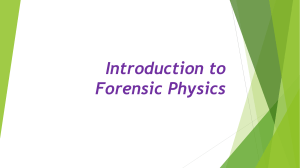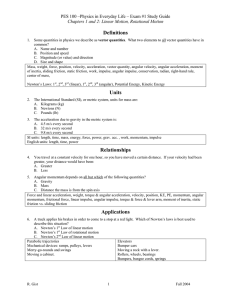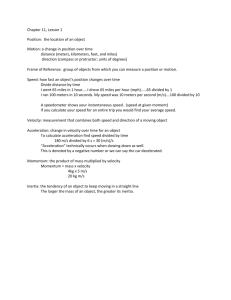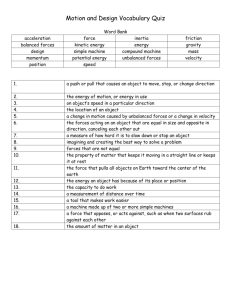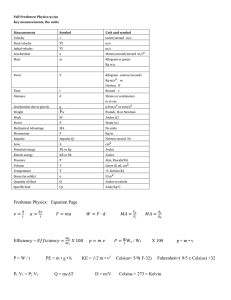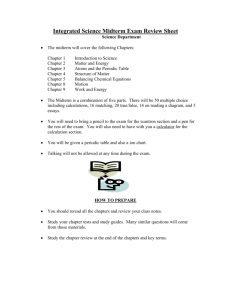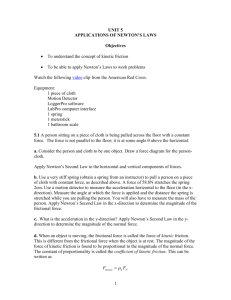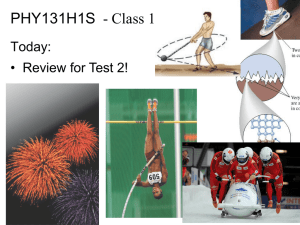AP Physics C-Mechanics Course Overview - Forest Hills High School
advertisement
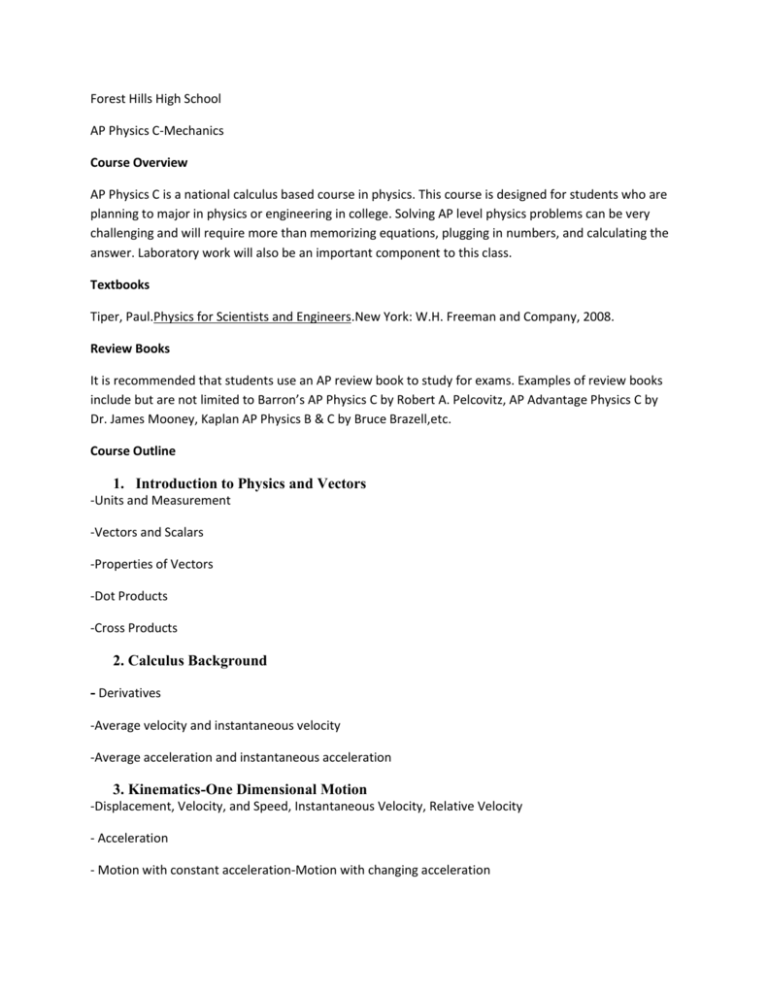
Forest Hills High School AP Physics C-Mechanics Course Overview AP Physics C is a national calculus based course in physics. This course is designed for students who are planning to major in physics or engineering in college. Solving AP level physics problems can be very challenging and will require more than memorizing equations, plugging in numbers, and calculating the answer. Laboratory work will also be an important component to this class. Textbooks Tiper, Paul.Physics for Scientists and Engineers.New York: W.H. Freeman and Company, 2008. Review Books It is recommended that students use an AP review book to study for exams. Examples of review books include but are not limited to Barron’s AP Physics C by Robert A. Pelcovitz, AP Advantage Physics C by Dr. James Mooney, Kaplan AP Physics B & C by Bruce Brazell,etc. Course Outline 1. Introduction to Physics and Vectors -Units and Measurement -Vectors and Scalars -Properties of Vectors -Dot Products -Cross Products 2. Calculus Background - Derivatives -Average velocity and instantaneous velocity -Average acceleration and instantaneous acceleration 3. Kinematics-One Dimensional Motion -Displacement, Velocity, and Speed, Instantaneous Velocity, Relative Velocity - Acceleration - Motion with constant acceleration-Motion with changing acceleration 4. Kinematics- Two Dimensional Motion -Projectile Motion -Circular Motion and Uniform Circular Motion 5. Newton’s Laws and Applications -Newton’s 1st Law: The Law of Inertia, Inertial Reference Frames - Force, Mass, and Newton’s 2nd Law - The Force Due to Gravity: Weight, Units of Force and Mass - Forces in Nature, The Fundamental Forces, Action at a Distance, Contact Forces - Problem Solving: Free Body Diagrams - Newton’s 3rd Law - Problems with Two or More Objects - Friction: Static Friction, Kinetic Friction, Rolling Friction, Friction Explained - Motion Along a Curved Path, Banked Curves - Drag Forces 6. Work, Power, and Energy -Work & Kinetic Energy: Motion in One Dimension With Constant Forces, The Work-Kinetic Energy Theorem, Work Done by a Variable Force -The Dot Product, Power -Work & Energy in 3 Dimensions -Potential Energy: Conservative Forces, Potential Energy Functions, Non-conservative Forces, Potential Energy and Equilibrium -Conservation of Mechanical Energy - The Conservation of Energy: The Work-Energy Theorem, Kinetic Friction Problems, Systems with Chemical Energy 7. Linear Momentum -The Center of Mass -Finding the Center of Mass by Integration: Uniform Rod, Semicircular Hoop -Motion of the Center of Mass - Conservation of Linear Momentum -Kinetic Energy of a System - Collisions: Impulse and Average Force, 1D Collisions, 3D Collisions 8. Rotations -Rotational Kinematics: Angular Velocity & Angular Acceleration -Rotational Kinetic Energy -Calculating the Moment of Inertia: Systems of Discrete Particles, Continuous Objects, The Parallel-Axis Theorem, -Newton’s 2nd Law for Rotation: Calculating Torques, Torque Due to Gravity -Application of Newton’s 2nd Law for Rotation -Rolling Objects: Rolling Without Slipping, Rolling With Slipping -The Vector Nature of Rotation: The Cross Product -Torque and Angular Momentum; The Gyroscope -Conservation of Angular Momentum -Static Equilibrium 9. Gravity -Kepler’s Laws -Newton’s Law of Gravity: Measurement of G, Gravitational & Inertial Mass, Derivation of Kepler’s Laws -Gravitational Potential Energy: Escape Speed, Classification of Orbits by Energy 10. Oscillations -Simple Harmonic Motion and Circular Motion -Energy in Simple Harmonic Motion: General Motion Near Equilibrium -Some Oscillating Systems: Object on a Vertical Spring, The Simple Pendulum, The Physical Pendulum Laboratory As part of the AP Physics C requirement, students will spend 20 percent of their instruction time engaged in laboratory work. In the physics laboratory, students will be presented with equipment and supplies and asked to design an experiment to test their hypothesis. They will make observations, collect data, manipulate data, and form conclusions. Each experiment requires a written report, kept in an organized lab notebook. Students will work in groups. Grading Policy 60%- Exams and Quizzes Tests consist of multiple-choice questions for part one and AP free-response questions for part two. I am available for tutoring after school during period 9. 20%- Homework Homework problems will be assigned regularly and checked/collected regularly. 15%-Lab Reports 5%-Class Participation Additional Notes I congratulate you on your decision to study AP Physics. I hope that you work hard and find studying the laws which govern the behavior of the universe both interesting and rewarding. Powerpoints, notes, homework, and other documents can be found on the website http://apphysicsforesthills.weebly.com/ You may also study using the website www.learnapphysics.com -Mr.Salamon


